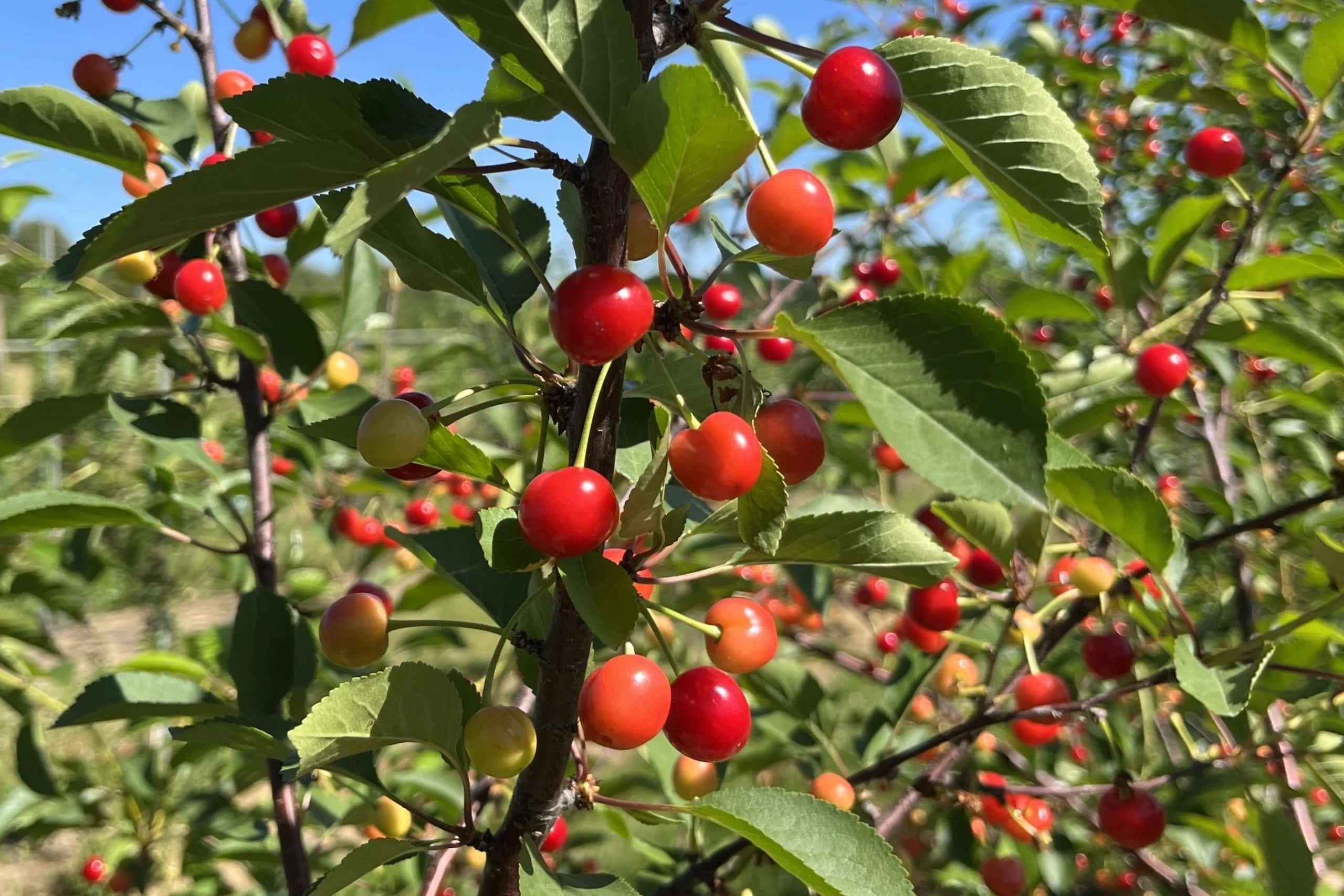
Montmorency cherry trees are renowned for their luscious, tart fruit and their picturesque appearance. These trees, which belong to the Prunus cerasus species, are cherished for their beauty and the delectable cherries they produce. Whether you're a gardening enthusiast, a nature lover, or simply someone who appreciates the beauty of fruit-bearing trees, Montmorency cherry trees are sure to captivate your interest. In this article, we'll delve into 20 fascinating facts about Montmorency cherry trees that will deepen your appreciation for these remarkable plants. From their historical significance to their cultivation and health benefits, there's so much to discover about these iconic cherry trees. So, let's embark on a journey to unravel the allure and wonder of Montmorency cherry trees!
Key Takeaways:
- Montmorency cherry trees are popular for their tangy cherries, which are rich in antioxidants and used in pies and juices. They are low-maintenance and can thrive in various climates, making them a great addition to home gardens.
- These cherry trees bloom with beautiful white flowers in early spring and can reach a height of 20-30 feet. Their tart cherries are harvested in late summer and are a staple ingredient in cherry pies, adding a delightful zing to culinary creations.
Montmorency cherries are the most popular sour cherries in North America.
With their vibrant red color and tangy flavor, Montmorency cherries are highly sought after for culinary purposes, particularly in baking and preserving.
These cherry trees are self-pollinating.
Unlike some fruit trees that require cross-pollination from another variety, Montmorency cherry trees can produce fruit on their own, making them a practical choice for home orchards.
They are hardy trees, thriving in USDA zones 4-7.
Montmorency cherry trees are adaptable to various climates and soil conditions, making them resilient and suitable for a wide range of growing environments.
The trees bloom in early spring, showcasing beautiful white flowers.
The delicate blossoms of the Montmorency cherry tree create a stunning display in the landscape, signaling the start of the fruit-bearing process.
Montmorency cherries are rich in antioxidants and offer numerous health benefits.
From reducing inflammation to aiding in sleep, these cherries are packed with essential nutrients that promote overall well-being.
The cherries are often used in culinary delights such as pies, jams, and sauces.
Their distinctive tartness adds a delightful zing to an array of dishes, making them a versatile ingredient in both sweet and savory recipes.
Montmorency cherry trees can reach a height of 20-30 feet at maturity.
Their graceful canopy and abundant fruit make them a striking addition to orchards, gardens, and landscapes.
These trees have a lifespan of 20-25 years.
With proper care and maintenance, Montmorency cherry trees can provide an abundant harvest for a couple of decades, delighting growers with their bountiful yield.
Montmorency cherries are commonly used in the production of cherry juice concentrate.
The concentrated form of Montmorency cherry juice is valued for its tangy flavor and potential health benefits, making it a popular ingredient in beverages and supplements.
The cherries are harvested in late summer.
The peak season for Montmorency cherries typically occurs from late July to early August, offering a window of opportunity to gather the ripe, succulent fruit.
Montmorency cherry trees require full sun for optimal fruit production.
Placing these trees in a sun-drenched location ensures that they receive the necessary light and warmth to yield an abundant crop of cherries.
They are known for their exceptional cold tolerance.
Montmorency cherry trees can withstand chilly temperatures, making them well-suited for regions with cold winters and early springs.
The trees are relatively low-maintenance.
While regular pruning and proper care are essential, Montmorency cherry trees are generally easy to cultivate, making them an attractive option for home gardeners.
Montmorency cherries are a staple ingredient in traditional cherry pie.
Their tart flavor and vibrant color make them a beloved choice for crafting the classic dessert, cherished by many.
The trees are susceptible to certain pests and diseases.
Common challenges include aphids, caterpillars, and bacterial canker, necessitating proactive pest management and disease prevention measures.
Montmorency cherry trees have been cultivated for centuries.
Their enduring popularity and rich history make them a cherished part of horticultural heritage, cherished by generations of growers.
The cherries are often dried and used in trail mixes and snack foods.
Their tangy sweetness and nutritional value make them a desirable addition to various snack products, offering a flavorful and wholesome option for consumers.
They are commonly used in commercial orchards and home gardens alike.
Whether in expansive agricultural settings or intimate backyard landscapes, Montmorency cherry trees thrive and bear fruit, catering to diverse cultivation preferences.
Montmorency cherries are celebrated for their versatility and culinary appeal.
From pies and pastries to savory sauces and beverages, these cherries lend their distinct flavor to an array of gastronomic creations, enriching the culinary world with their unique profile.
The trees add aesthetic charm to outdoor spaces.
In addition to their delectable fruit, Montmorency cherry trees contribute to the visual allure of gardens and orchards, enhancing the natural beauty of their surroundings with their blossoms and foliage.
Montmorency cherry trees are cherished for their delectable fruit, ornamental charm, and cultural significance. Whether adorning landscapes with their blossoms or gracing tables with their flavorful cherries, these trees continue to captivate enthusiasts and enrich culinary experiences with their delightful presence.
Conclusion
In conclusion, Montmorency cherry trees are a delightful addition to any garden, offering not only beautiful blossoms but also a bountiful harvest of tart cherries. Their rich history, numerous health benefits, and versatility in culinary applications make them a valuable and rewarding choice for both experienced and novice gardeners. By understanding the unique characteristics and requirements of Montmorency cherry trees, individuals can cultivate these wonderful trees with confidence, knowing they are contributing to their local ecosystem and enjoying the fruits of their labor for years to come.
FAQs
Are Montmorency cherry trees suitable for all climates?
Montmorency cherry trees thrive in temperate climates with cold winters and mild summers. They require a significant amount of winter chill hours to produce fruit, making them unsuitable for regions with consistently warm temperatures.
How can I maintain the health of my Montmorency cherry tree?
To ensure the optimal health of your Montmorency cherry tree, provide well-draining soil, adequate sunlight, regular watering, and annual pruning. Additionally, be vigilant against common pests and diseases, and consider consulting with a local horticulturist for specific care recommendations based on your region.
Was this page helpful?
Our commitment to delivering trustworthy and engaging content is at the heart of what we do. Each fact on our site is contributed by real users like you, bringing a wealth of diverse insights and information. To ensure the highest standards of accuracy and reliability, our dedicated editors meticulously review each submission. This process guarantees that the facts we share are not only fascinating but also credible. Trust in our commitment to quality and authenticity as you explore and learn with us.


